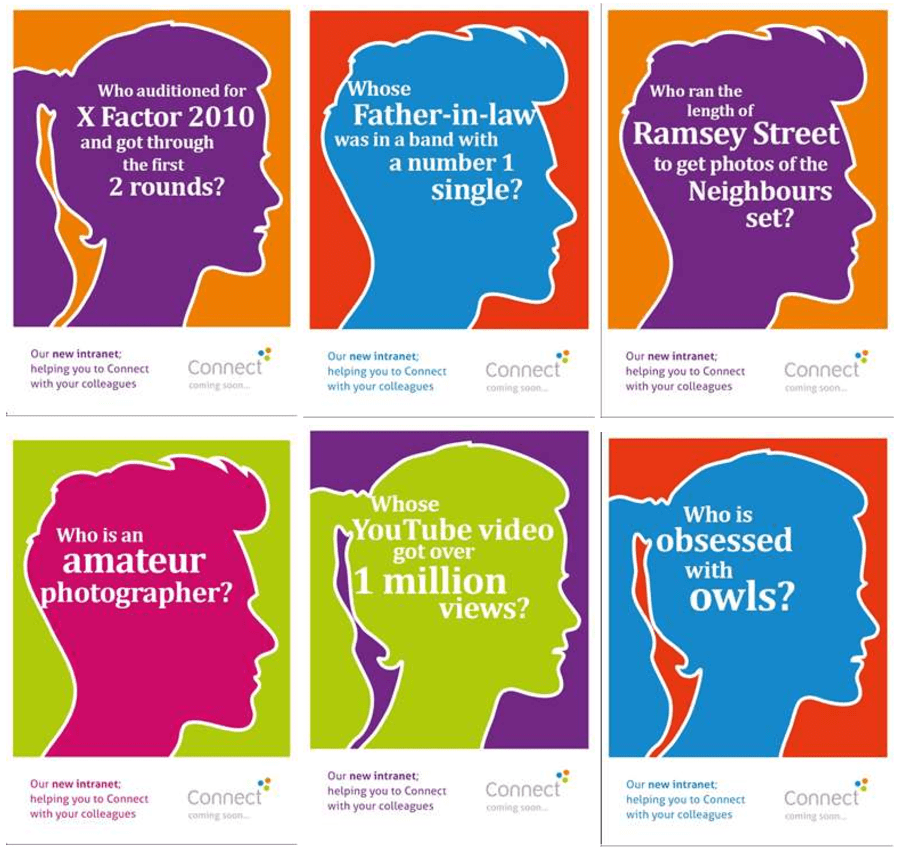A new employee's first 90 days are critical to their ultimate success at your small business.
If those first days are memorable and engaging, your odds of ending up with a highly committed top performer increase dramatically. On the other hand, if those first days are stressful, tedious, or defined by mountains of paperwork, your new hires will struggle to acclimate to their role. If the problem persists, they'll leave for a better opportunity.

In fact, with more employees quitting their jobs now than at any other time in the past decade, it has never been more important for small businesses to deliver a memorable onboarding experience to convince talented new hires to stick around.
But therein lies the challenge: How do you make a rote process that every new hire has to go through at every job “memorable"?
The five companies featured below have figured it out. We'll look at the unique onboarding ideas they've implemented to give you inspiration for how to improve the onboarding process at your own small business.
Idea #1: Entry interviews
How it works
Thrive Global administers entry interviews with every new hire to learn more about what's important to them and how the company can best support them during their employment.
Through these interviews, Thrive Global founder Arianna Huffington says they've uncovered a number of cases where they can better cater to their employees.
One worker said taking her daughter to school in the mornings was important to her, so her manager made sure to not schedule meetings too early. Another was given flexibility to go to physical therapy every two weeks for a frozen shoulder.
Why it's a great idea
There's a tendency for onboarding to be a one-way conversation. Do this, learn this, fill this out, etc. But remember: Your new hires are assessing their fit in your organization just as much as you are. If they feel like they're not being heard, why would they feel like they fit in?
That being said, simply leaving the door open for feedback or concerns isn't always enough, as new hires may be nervous to speak up.
Something like a formalized entry interview forces the issue and sends a clear message: “We're listening. How can we help you?"
A TWIST ON THIS IDEA FOR YOUR SMALL BUSINESS:
One-on-one conversations are super important during onboarding, but if you can't find the time to do entry interviews, consider sending out a survey instead.
You should send out a survey before a new hire starts to learn how they like their coffee, meeting times, and more to make their first few days extra personalized. Then follow up with surveys during and after onboarding to learn how you can improve the experience for your next batch of new hires.
Idea #2: An intranet scavenger hunt
How it works
Sending new hires off on a scavenger hunt to learn about their office and colleagues isn't exactly unique at this point. A number of companies have taken this idea and run with it, including Bazaarvoice and Glassdoor.
MHS Homes does their scavenger hunt a little differently, though. Instead of sending new hires out on a physical scavenger hunt, where they might disrupt other folks in the office, they have them compete in a virtual one instead—through the company intranet.
New hires have to find the correct person in the company directory with only a single clue or factoid for help.

An example of the MHS Homes intranet scavenger hunt (Source)
Why it's a great idea
An intranet scavenger hunt isn't just a great way for your new hires to learn interesting things about their office mates. It also offers a fun introduction to the tools and technologies they'll be using every day.
If workers don't get enough time to learn how to use these important systems, or simply hate using them, they'll fall back on asking others—their coworkers, their manager, HR—to look up information or perform tasks for them instead, wasting a ton of time and productivity.
A TWIST ON THIS IDEA FOR YOUR SMALL BUSINESS:
If you don't already have a user-friendly core HR system in place, get one. These platforms make it a lot easier for employees to self-service their HR needs (instead of bothering you) and also allow workers to build out detailed employee directory profiles for onboarding exercises like this one.
If workers don't have time to build out detailed profiles, or if you'd prefer new hires learn more about their coworkers face-to-face instead of from behind a screen, you can turn the intranet scavenger hunt into an exercise to find important company tools and resources instead.
Idea #3: Lunch roulette
How it works
In order for new hires to get more acquainted with the rest of the company, a developer at Warby Parker created "lunch roulette." It's an app that randomly selects eight people from within the organization every week, broken up into two groups of four, to go out to lunch together on the company's tab.
An additional catch: The app ensures that every person in a group is from a different department.
Why it's a great idea
Lunch roulette kills two birds with one stone from our perfect 90-day new hire onboarding process: treating your new hire to lunch to make them feel welcome and encouraging them to learn more about the company from departments other than their own.
We like lunch roulette for a couple of other reasons. It's completely randomized, so HR or management doesn't have to attempt to pair up new hires with people they think they'll become friends with.
It also involves the whole company and gives new hires clear direction (“Eat lunch with A, B, and C") during what can be a very nerve-wracking and indecisive time.
A TWIST ON THIS IDEA FOR YOUR SMALL BUSINESS:
You can rig up a random name generator for lunch roulette using your employee roster and Microsoft Excel. If that's too much trouble, LinkedIn has an easier alternative.
In a LinkedIn survey of 14,000 global professionals, 52% say they'd prefer to have a list of coworkers they should meet during onboarding. Talk to every department to find volunteers, come up with your list, then schedule one-on-ones and lunches for your new hire with these people so they can learn more about other facets of your organization.
Idea #4: Virtual reality (VR)
How it works
New hires at fast-casual restaurant chain honeygrow go through all of the training sessions you might expect: Learning the menu, how to clean up spills, how to deal with customers, etc.
The way they go through these trainings, though, is pretty unique. Instead of poring through training manuals or watching videos, employees don a virtual reality (VR) headset that allows them to look around a real honeygrow location and learn about the company's history and values from the actual CEO.
Honeygrow VR training preview from Klip Collective on Vimeo
Why it's a great idea
Two-thirds of U.S. workers say they're dissatisfied with their company's current training program. That's bad news when you consider that a significant chunk of onboarding is devoted to training.
Not only can VR inject some fun into your training program, but it has other benefits for your new hires, such as improved knowledge retention and quicker ramp-up times to full productivity.
VR may help you attract top talent too: A 2016 study by Dell and Intel found that 80% of Millennials—the largest generation in the U.S. workforce—consider the technology a company uses when deciding if they want to work there.
A TWIST ON THIS IDEA FOR YOUR SMALL BUSINESS:
If you're not sure if adopting VR for employee onboarding and training is right for your small business, check out “Virtual Reality Employee Training Is Here. Should You Adopt?"
If you're certain you're not ready for VR, consider investing in a learning management system (LMS) instead. Besides making administering and tracking employee training easier, many LMSs also include content authoring tools to turn boring training materials into more engaging eLearning courses with videos, games, and simulations.
Idea #5: Pay new hires to quit
How it works
This idea from Zappos is more than a decade old at this point, but the fact that HR people are still talking about it—and Zappos' now-parent company, Amazon, has adopted a variation of this idea themselves—tells us it's still worth including here.
It's deceptively simple. After the first week of Zappos' intense, four-week onboarding program, Zappos extends all of its new hires what it calls, “The Offer." If a new hire quits right then and there, they receive full pay for that week plus $1,000.
Why it's a great idea
You may have committed to your new hires, but have they committed to you? It's important that they do: Gallup found that organizations who have engaged and committed employees enjoy “better customer engagement, higher productivity, better retention, fewer accidents, and 21% higher profitability" than those who don't.
Add in the fact that keeping a bad hire around at your small business can cost you thousands of dollars over time and it becomes clear that it's better to part ways with a non-committal new hire right away.
Offering a financial incentive makes the separation easier. Your non-committals who take the offer can go and find a better job for their needs, while those that don't take the offer have a memorable experience and get the chance to prove they're committed for the long haul. It's a win-win.
A TWIST ON THIS IDEA FOR YOUR SMALL BUSINESS:
Say you don't want to shell out thousands of dollars every time a new hire isn't jiving with your company. That's completely fair.
Instead, you can copy what Jellyvision calls their “Graceful Leave Policy ." It's a conversation with new hires during the onboarding process during which you go over the potential reasons why they won't like their jobs and the process for how they can make it known if they want to leave. It's a great way to set expectations early and give an easy out to workers who realize the job isn't for them.
Learn more with these additional onboarding resources
Given all the responsibilities that comes with managing human resources, it's not all that surprising that only 50% of small businesses have a structured onboarding process. You needed your new hires to be fully productive employees yesterday—who has time for a lengthy onboarding process?
That being said, it's worth the effort. Creating a structured onboarding program that's both memorable and engaging has proved to be beneficial to long-term employee productivity and retention. You owe it to your business to make it happen.
For additional help, check out these other Capterra onboarding resources:
“How to Execute the Perfect 90-Day New Hire Onboarding Process"
“4 Onboarding Best Practices to Speed Up Your Process"
“The Top 4 Onboarding Software Options for HR Superstars"